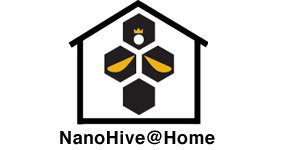

 |
"Every good project deserves a good explanation, so I'm going to attempt a thorough, albeit lighthearted, overview of the Q-SMAKAS project in 5 sections and hold myself to several hundred words a section (with the option to expand on contents with your (the reader's) further interest)." |
The intent of Q-SMAKAS as a general simulation protocol is to diagnose defect structures from among a selection of tooltips as a means to predicting which ones are more or less likely to behave correctly in this mechanosynthetic context (to weed out the field of candidate structures).
The quote above is how I described the difference between stability and reactivity in the DC10c tooltip to Sander Olsen (question 7 if anyone's interested). The carbon dimer tooltips (such as the nanofactory DC10c and other dimer tooltips proposed by Robert Freitas and Ralph Merkle and coworkers) are highly reactive species because of the highly strained geometries of the carbon dimers. I would expect no insurmountable problems with the study (by spectroscopy or as reactants in an organic synthesis) of the DC10c tooltip or the silicon/germanium/tin-based dimer tooltips with the bound acetylene molecules, as the most reactive positions of the carbon dimers are engaged in covalent bonds to hydrogen atoms. With those hydrogen atoms removed, however, the DC10c or any other proposed carbon dimer tooltip would be expected to react instantaneously with ANYTHING in solution. As any molecular manufacturing enthusiast knows, however, the issue of instantaneous reactivity with solution is removed from the discussion because there is no solution to react with. A highly reactive molecule that has nothing to react with will, as expected, not react.
All gross generalities are, of course, bad. There is a big difference between reactivity (which I'll call the tendency of something to interact with something else) and stability (which I'll call, in a mechanosynthetic context, the tendency of something to interact with itself). It is possible that a tooltip can physically rearrange to some other stable form, driven by nothing but stray photons, heat in the system, the time of day, etc.). A knife with its blade exposed is certainly the more functional geometry for such an object, but the knife with its blade retracted into the handle is the geometry least likely to damage the blade. A similar analogy can be drawn with the carbon dimer tooltips. The "ready" tooltip is, by application, the geometry preferred for mechanosynthesis. It is possible that some more stable geometry exists for the tooltip that increases the total number of covalent bonds (which, without the whole quantum chemical rigmarole, is a pretty good gauge of chemical stability). Worse still, this need not be some simple "insertion" of the dimer into the tooltip or simple twisting defect to render the tooltip useless for deposition. Highly strained molecules are Japanese puzzle boxes, where a seemingly simple change in geometry can lead to a cascade of multi-step rearrangements that can, at their worst, lead to structures geometrically far removed from their initial forms. While these new geometries may be chemically interesting and worthy of a paragraph in an organic mechanisms textbook, they are very likely useless to mechanosynthesis because the division of the deposition process into tooltip-feedstock-workspace is formally removed, thereby throwing out the deterministic progression in the fabrication process that is simultaneously the cornerstone and the controversy of all molecular manufacturing.
The identification of defect states to know when and how a tooltip may deform and make itself useless for mechanosynthesis is a critical "last step" of any exhaustive tooltip analysis. If you've ever thrown out a broken appliance after 1 week of 7 uses, you know the importance that the manufacturer SHOULD have placed on product testing. Now imagine that same appliance set to operate in 20 nanosecond cycles with the same defect rate. Even the most optimistic nanotechnologist would have a hard time basing a multi-trillion dollar industry on a nanoscale hammer or screwdriver with a 140 nanosecond lifespan. While no tooltip may ever have the longevity of the heliocentric model, the Haber cycle, or a Twinkie in a dark closet, one that undergoes 1012 operations in, say, 100 nanosecond intervals is still good for nearly 10 days of productivity. A tooltip that could perform the same stable feat of engineering with an expectancy of 1023 operations would last about 2.7 million years. A tooltip that falls apart instantaneously to a highly stable geometry is, of course, the best reason for legislators to enact nano-lemon laws at the first sign of commercial, previously-owned, "only employed for replication once" molecular manufacturing appliance resellers.
The Q-SMAKAS simulation yields many high-energy, highly deformed structures that then undergo energy minimization, some of which may be the "ready" tooltip and many of which may likely be what we're calling "defect" structures. If Brian decided to call this energy minimization step "Q-SNOOOZED", or "Quantum Self-consistency = No Other Obligatory Optimization = Zero Energy Difference," we'll have completed the gamut of necessary quantum onomatopoeia to describe all molecular activities performed in the project. The automation, and the massive distribution of possible structure calculations, is meant to provide a researcher with as highly sampled a "geometry space" of plausible defect structures as possible, thereby adding considerable weight to the validity of a tooltip design for mechanosynthetic operations or, with the identification of one or more stable and realizable defect structures, good reasons to redesign the tooltip or run screaming from their research. It is expected that many of the MD steps will generate structures that, upon optimization, will fall to the same minimum energy form, meaning it is completely plausible that 500 MD-sampled geometries may yield only 10 distinct defect structures. If the 500 runs yield only 1 structure (the minimum), that means we either have a phenomenally stable tooltip or we've not beaten on the tooltip hard enough (which means we will change the MD conditions accordingly).